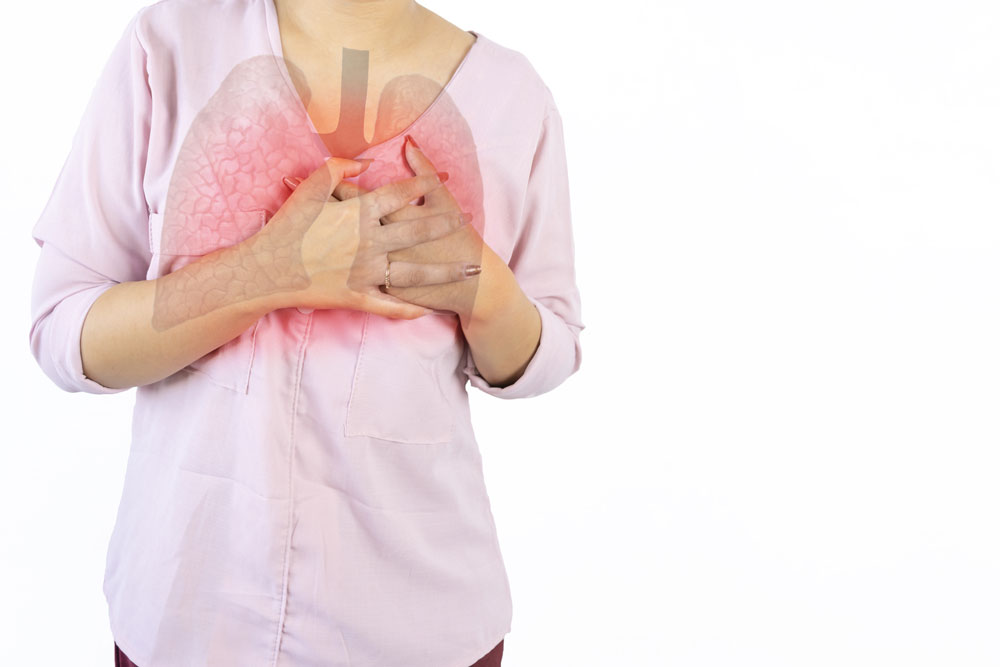
Chest Pain: Non-Cardiac and Non-Pulmonary Causes
Chest pain can stem from various origins, extending beyond the heart and lungs to indicate diverse health issues. The causes of chest pain encompass a broad spectrum of conditions and diseases.
What is Chest Pain?
Chest pain refers to a painful or discomforting sensation perceived by an individual due to the stimulation of different structures within the chest region. It can manifest with varying degrees of intensity and characteristics.
Some common features of chest pain include:
- Location: Chest pain is typically felt in the middle of the chest or on the left side of the chest cage.
- Character: The pain can present in various characterizations, such as squeezing, burning, pressure, stabbing, sharpness, or heaviness.
- Duration: Chest pain is usually short-lived, ranging from a few minutes to a couple of hours.
- Triggering Factors: Various factors can trigger chest pain, including physical activity, stress, eating, breathing, and changes in body posture. These situations may either exacerbate or alleviate the pain.
- Associated Symptoms: Chest pain often accompanies other symptoms. Symptoms like shortness of breath, dizziness, cold sweating, nausea, and vomiting may occur simultaneously.
What is Chest Cage Pain?
The chest cage is composed of ribs, sternum (breastbone), and the spine. Therefore, it encases internal organs, particularly the heart and lungs, offering protection. Pain occurring in this region signifies a discomforting or painful sensation associated with the cage-like bone structures in the chest.
Chest cage pain can stem from various factors. The intensity and nature of the pain can vary based on the underlying causes.
Non-Cardiac and Non-Pulmonary Causes of Chest Pain
The non-cardiac and non-pulmonary origins of chest pain are as follows:
- Musculoskeletal Causes: Among the most prevalent reasons for chest pain are issues pertaining to the muscular and skeletal systems. Pain can arise from muscle tension, injuries, cartilage damage, neck or shoulder problems. Poor posture habits and excessive exercising can contribute to discomfort in the chest cage region.
- Gastrointestinal Disorders: Discomfort in the chest can also be linked to certain conditions involving the stomach, esophagus, gallbladder, or pancreas. Stomach ailments like reflux, ulcers, and gastritis, especially affect the upper chest area. Conditions like gallstones or pancreatitis can also induce similar symptoms.
- Upper Respiratory Infections: Non-pulmonary causes include upper respiratory infections. Bronchitis, pneumonia, or respiratory infections can trigger chest pain. These infections are often accompanied by other respiratory symptoms such as cough and shortness of breath.
- Costochondritis: Costochondritis results from inflammation of the cartilage of the chest cage. It can cause pain in the middle or left side of the chest, often associated with heartbeats. Costochondritis can lead to chest pain that may be mistaken for a heart attack.
- Anxiety and Panic Attacks: Anxiety and panic attacks are marked by intense feelings of stress, anxiety, and fear. These conditions can manifest as physical symptoms, including a sensation of tightness in the chest and chest pain. Panic attacks can mimic the severe chest pain of a heart attack.
- Bone Issues: Bone diseases can also contribute to chest pain. Rib fractures, sternum fractures, or bone metastases can lead to severe chest discomfort.
- Nerve Compression: Spinal issues, such as slipped discs or pinched nerves, can result in chest pain. Compression of nerves in the neck and upper back region can lead to chest pain.
- Vascular Problems: Emergencies related to blood vessels, like aortic aneurysm or dissection, can cause intense chest pain. Given the potential life-threatening nature of these conditions, urgent medical intervention is required.
- Rheumatologic Diseases: Rheumatoid arthritis, systemic lupus erythematosus (SLE), ankylosing spondylitis, and other rheumatologic conditions can lead to autoimmune and inflammatory processes that result in chest pain.


